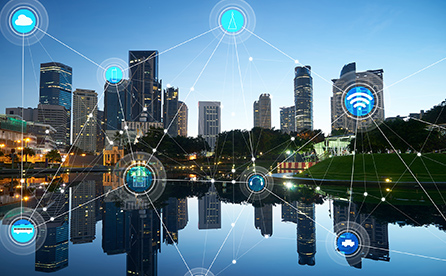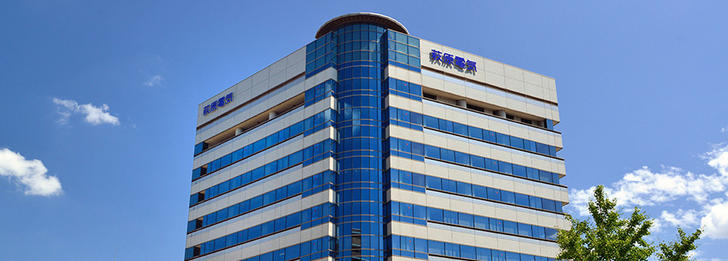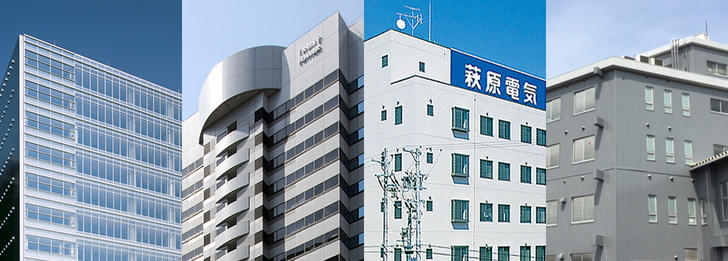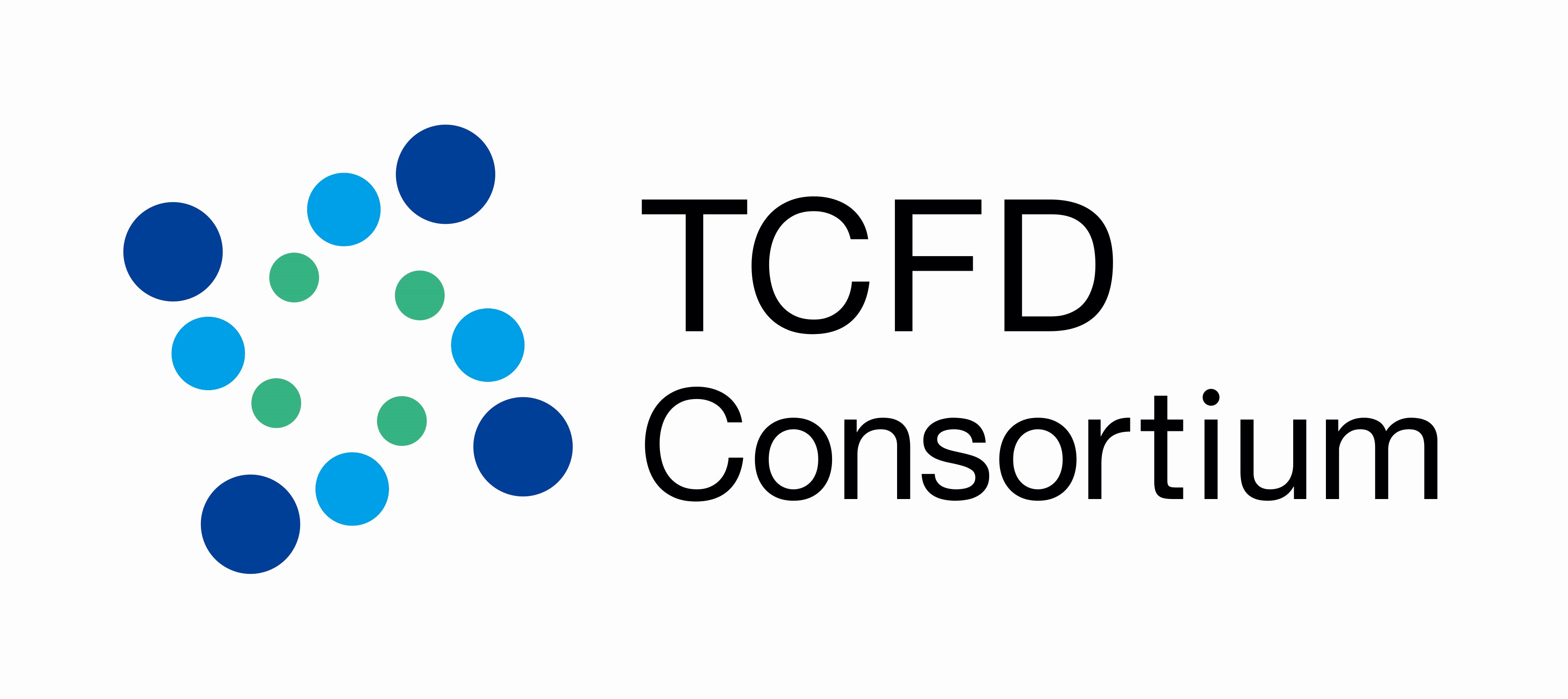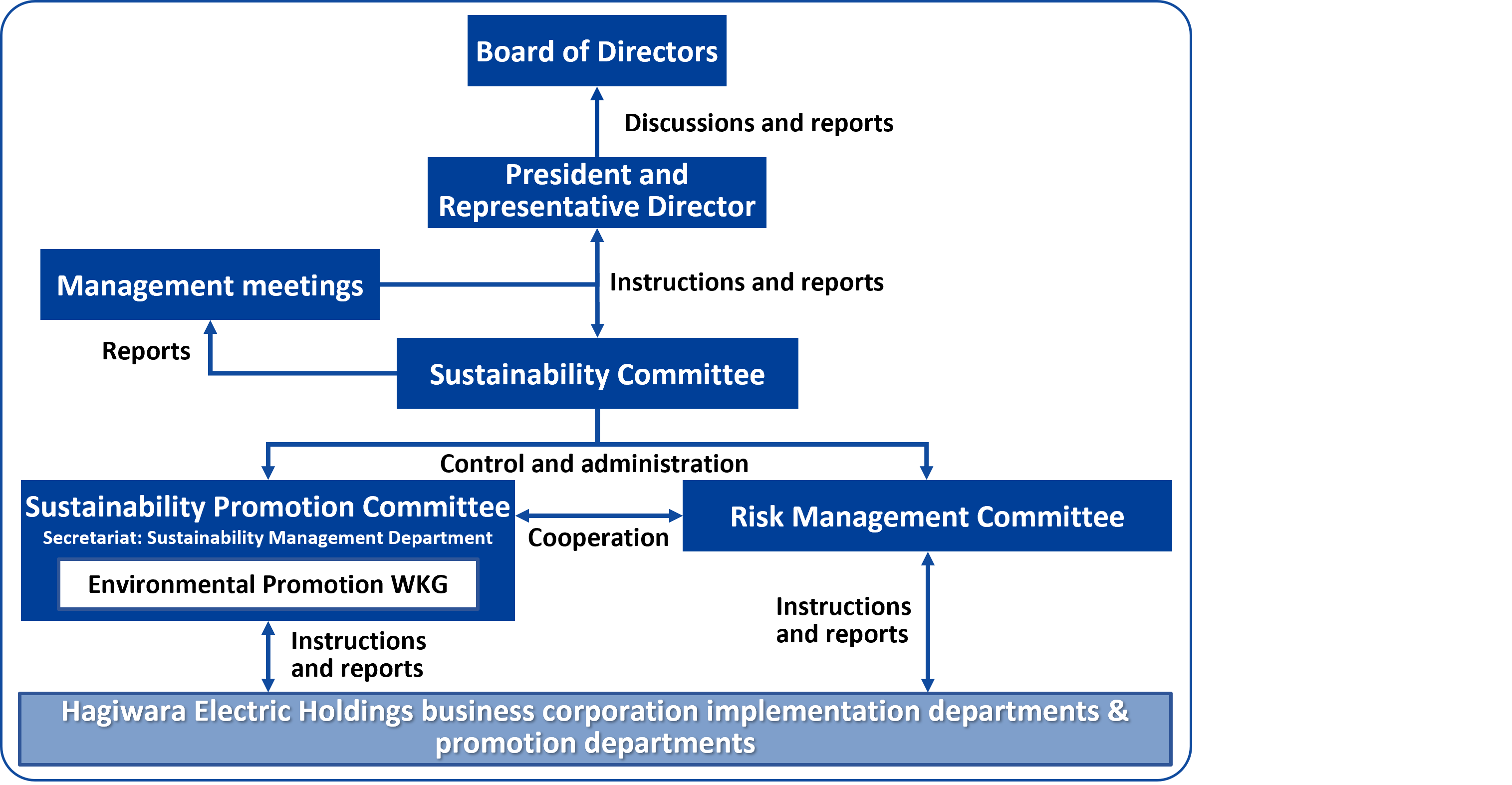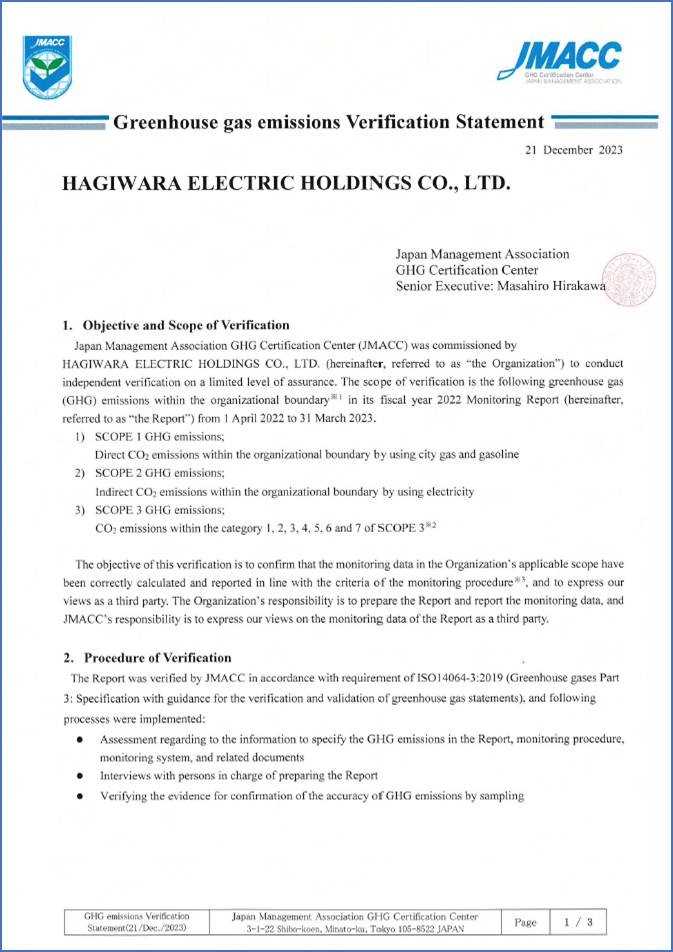Our Business Our Business Top CLOSE
- Our Business
- Our Company
-
IR Info
IR Info IR Info Top CLOSE
-
Sustainability
Sustainability Sustainability Top CLOSE
- Home
- Sustainability
- Environment
Environment
The Hagiwara Electric Group promotes activities for achieving a sustainable society based on the recognition that the products and service we provide to customers help to preserve the environment and reduce the environmental impact of society as a whole.
Today, global warming, the industrial waste problem, and other forms of environmental destruction have become apparent and threaten to become more serious. Greater effort is needed in order to make sustainable development possible in the 21st century. These issues are accompanied by a variety of legal developments aimed at establishing a recycling-oriented society and greater environmental awareness, including the achievement of carbon neutrality, companies that release zero emissions, eco funds, and the spread of green procurement.
Amidst such social trends, the Hagiwara Electric Group recognizes that it is our social responsibility to continuously and systematically promote environmental conservation activities as a company that takes on the challenge of creating a hopeful future society in which nature and mankind coexist in harmony through the realization of an advanced information society and extensive communication brought about by advanced electronics technologies such as IT and networks. Currently, we are actively promoting EMS activities centered on the ISO 14001 environmental management system.
When it comes to chemicals that are harmful, not only to the human body but also to the global environment, it is important to manage the chemicals contained in components that go into customer products, in addition to managing toxic chemicals included in our own products and used in manufacturing processes, so that we are promoting the development of a system for smoothly disclosing and communicating the chemicals contained in products throughout the supply chain.
Through its business activities, the Hagiwara Electric Group will continue to act in good faith to conserve and improve the global environment with the aim of achieving a sustainable society along with our contributions to society itself.
Environmental Management
Based on the concept of sustainability, the Hagiwara Electric Group has acquired ISO 14001 management system certification for its main offices with the goal of reducing environmental risk and contributing to the environment.
Environmental Activities
Eco-friendly Activities
- Encouraging business casual, managing air conditioning, and turning off lights
- Reducing paper, systematizing processes, promoting remote work, sorting waste products
- Eco-friendly driving
- Community cleanup
Supply Chains
- Sales activities for products that benefit the environment
- Energy-saving products
- Smaller and lighter products
- Automotive products that benefit the environment
- IT devices that improve productivity
- Environmentally friendly products
- Management of chemicals contained in products throughout the supply chain
Resource Recycling
- Ecocap (bottle cap recycling) activities
- Installing solar panel generators (donating revenue from selling electricity)
Information Disclosure in Accordance with TCFD Recommendations
The Hagiwara Electric Group endorsed the TCFD (Task Force on Climate-related Financial Disclosures)*¹ recommendations in March 2023 and become a TCFD Consortium*² member in April 2023. The Hagiwara Electric Group recognizes climate change as an important management issue, and in cooperation with other companies and related organizations that support the TCFD recommendations, we shall endeavor to disclose information based on the four disclosure categories described by the TCFD recommendations: governance, strategy, risk management, and metrics and targets.
*1. TCFD (Task Force on Climate-related Financial Disclosures)
The Task Force was established in 2015 by the Financial Stability Board at the request of the G20. It encourages companies and other organizations to assess the financial impact of risks and opportunities related to climate change on their own operations and to disclose information related to governance, strategy, risk management, and metrics and targets.
*2. TCFD Consortium
The TCFD Consortium was established in 2019 as a forum for companies, financial institutions, and other organizations that support the TCFD recommendations to discuss effective corporate information disclosure measures and efforts by financial institutions to make appropriate investment decisions on the basis of disclosed information.
Information-Disclosure Items Set Forth in TCFD Recommendations
| Basic item | Overview | Specific content for disclosure |
|---|---|---|
| Governance | Governance of organization regarding climate-related risks & opportunities |
●System of board of directors for monitoring climate-related issues ●Roles of top-level managers in evaluation and management of risks and opportunities |
| Risk management |
Processes regarding specification, evaluation, and management of climate-related risks |
●Risk management ●Details of processes regarding specification and evaluation of climate-related risks ●Status of integrations with company-wide risk-management structures |
| Strategy | Organization's climate-related risks & opportunities and their impacts on businesses, strategies, and financial affairs |
●Short-term, medium-term, and long-term risks and opportunities ●Impacts of risks & opportunities on businesses, strategies, and financial planning ●Impacts of relevant scenarios and responses to them |
| Metrics and targets |
Metrics and targets used for evaluation and management of climate-related risks & opportunities |
●Greenhouse gas emissions (Scope 1, 2, and 3) ●Indicators used for management of climate-related risks & opportunities ●Targets and results used for management of climate-related risks & opportunities |
Governance and Risk Management
Governance
In July 2022, we at Hagiwara Electric Holdings established our Sustainability Committee, which is chaired by our President and Representative Director, in order to cross-sectionally promote sustainability management among all companies of our group. As subordinate organizations of the Sustainability Committee, we have established various committees that promote and manage internal control, risk management, the SDGs, and ESG, and have been moving forward with strengthening group management through systematic and effective management systems.
Our Sustainability Promotion Committee (which meets quarterly) is chaired by our executive who supervises management strategies. This committee formulates policies regarding sustainability (which include environmental issues related to addressing climate change and promoting carbon neutrality), discusses and decides upon measures regarding important issues, and monitors the progress of such measures. Based on the policies and important measures of the Sustainability Promotion Committee, and centering on our Environmental Promotion Working Group, we deploy concrete initiatives regarding environmental issues targeting the relevant departments of group companies and the structures of environmental management systems, and we work to promote activities in this regard.
The chairperson of the Sustainability Promotion Committee reports to the Sustainability Committee (held quarterly and chaired by the President and Representative Director), which is composed mainly of members of the management meetings, on the status of major activities and important matters relating to the promotion of sustainability, and receives instructions from the Sustainability Committee. Then, based on examination and judgement by the Sustainability Committee, important matters are discussed and decided upon at management meetings and meetings of the Board of Directors. Thus, our operating system is designed to ensure appropriate supervision and guidance by the Board of Directors.
Risk management
Centering on the Sustainability Promotion Committee, we at Hagiwara Electric Holdings specify and analyze risks and opportunities related to climate change. We sort out the risks through scenario analysis in which we refer to external scenarios and so on of the Intergovernmental Panel on Climate Change (IPCC) and International Energy Agency (IEA). Then, we move forward with appropriately addressing such risks based on identifying levels of impact regarding businesses and specifying risks that are of particularly high importance in light of industry trends.
The chairperson of the Sustainability Promotion Committee participates in our Risk Management Committee (which meeting quarterly), and thus we have a structure in which perspectives on climate-related problems are reflected in the company-wide risks and business risks of our group. This chairperson regularly and appropriately gives reports to, and holds discussions with, the Sustainability Committee (which meets quarterly and is chaired by the President and Representative Director), which carries out integrated management, and management meetings and meetings of the Board of Directors (which are both chaired by the President and Representative Director), which provide supervision and guidance, and as such, the Board of Directors recognizes the company-wide risks of our group.
Going forward, we will strengthen processes for managing climate-related risks, and strengthen structures for integrating climate-related risk management and the comprehensive risk management of our group, and we will work to apply such structures to management strategies regarding climate-related risks.
Organization chart
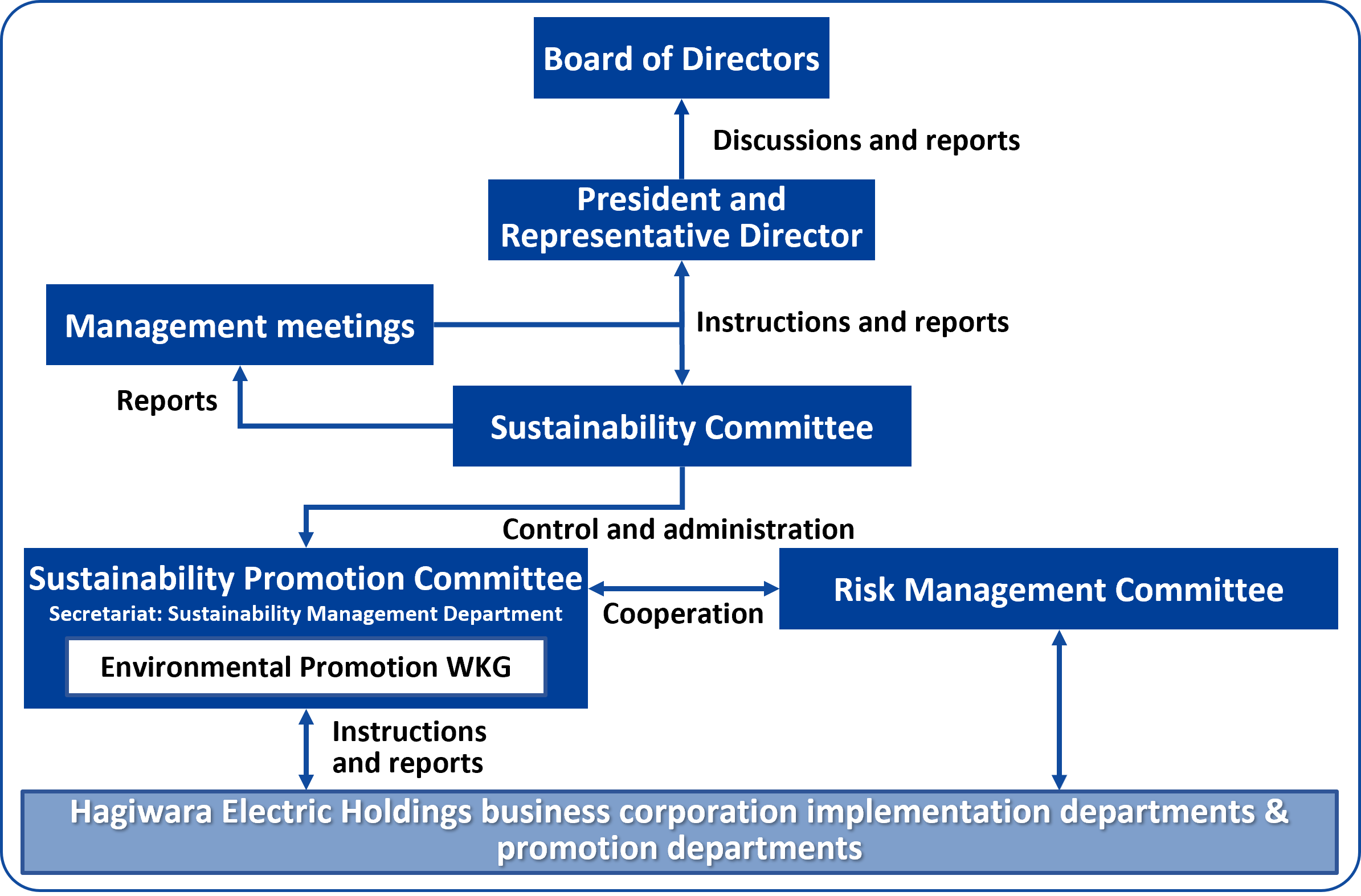
Strategy
Main Climate-Related Risks and Opportunities
The Hagiwara Electric Group has conducted a quantitative scenario analysis based on a 2°C scenario that concerns the period up to 2050. We comprehensively analyzed the short, medium, and long-term risks and business opportunities of the Hagiwara Electric Group related to climate change, and selected the following.
We set matters that we believe will have a large impact on our businesses and corporate activities as “important matters,” and extracted these. As a result, in the area of transition risks, we extracted matters such as the effects of the introduction of carbon taxes and other changes to various laws and regulations on costs, and unaddressed risks related to information-disclosure needs. Furthermore, in the area of physical risks, we extracted matters such as supply-chain disruptions caused by the intensification of abnormal weather, and risks regarding declines in sales caused by the effects of a rise in average temperatures and so on.
Going forward, based on that analysis, we will identify risks and opportunities that apply to a 1.5°C scenario, reevaluate their degree of impact, consider various countermeasures, and then incorporate them into our management strategy.
| Category | Factor | Business impact | Time frame | Impact level | |
|---|---|---|---|---|---|
| Main risks |
Political measures, laws, and regulations |
Orders and regulations regarding production and services for automobile-related customers |
Our company has supply chains related to trading-company functions, and these include semiconductor manufacturing and other types of manufacturing |
Medium -term |
Large |
| Decrease in sales and profit due to the phenomenon related to the quantity of gasoline vehicle-related parts and changes in the parts structure, as automobile-related customers shift to EVs in response to stricter policies for the automobile industry | Medium -term |
Medium | |||
| Strengthening of emission regulations | Pressure on profits due to higher logistics and transportation costs resulting from higher freight and transportation costs | Medium -term |
Medium | ||
| Technologies | Replacement of existing products with low-carbon technologies, failure to invest in new technologies, etc. | Increase in capital investment costs due to expansion of in-house power generation infrastructure such as solar power generation facilities | Medium -term |
Medium | |
| Increase in investment costs for the development of environmentally friendly in-house products (industrial computers, inspection equipment, etc.) | Medium -term |
Small | |||
| Reputation | Changes in investor and customer behavior | Possibility of insufficient response to environmental information disclosure needs (stricter ESG assessment standards, expansion of areas requiring disclosure) resulting in withdrawal of investment in the company, decline in share price, impact on human resource acquisition, and risk of human resource outflow | Medium -term |
Large | |
| Acute physical risks |
Intensification of abnormal weather | Increased severity and frequency of extreme weather events, such as typhoons and floods, increases in the risk of supply chain disruptions and prolonged infrastructure outages (which would reduce sales) | Long -term |
Medium | |
| Chronic physical risks |
Rise in average temperatures | Rising temperatures increasing the cost of energy used for air-conditioning in the company's offices, and the cost of renovation and rent increasing due to energy-saving renovations of buildings for coping with rising temperatures and relocations to properties with higher environmental performance | Long -term |
Small | |
| Rising temperatures increasing energy costs for our suppliers, which in turn will increase our purchasing costs due to rising costs | Long -term |
Medium | |||
| Main opportu -nities |
Products and services |
Popularization and expansion of electric vehicles | Increase in opportunities for proposals due to changes in the composition of components related to electric vehicles (motors, inverters, batteries, etc.), and increased business opportunities in software verification and development | Medium -term |
Large |
| Business changes accompanying shift to EV and energy-saving measures | Expanded business opportunities regarding battery monitoring and motor & inverter-related production equipment in the EV market as a result of policies to promote electric vehicles | Medium -term |
Large | ||
| Expanded opportunities in the IT solutions business (cutting-edge IT, DX promotion, cloud computing, etc.) and industrial equipment business (devices, infrastructure, IoT, control/analysis, etc.) for improving the efficiency, productivity and energy-saving performance of customers' manufacturing processes, as a result of growing awareness regarding environmental impact and resource conservation | Medium -term |
Large | |||
| Markets | Changes to markets and trends | Increased opportunities to create innovations that contribute to solving social issues, such as carbon neutrality compliance, and participation in new businesses and wider domains | Medium to long -term |
Medium | |
| Resilience | Promotion of energy-saving measures | Promotion of activities to reduce the company's internal environmental impact, increased use of environmentally friendly products such as fixtures, and improved environmental awareness among employees, resulting in an improved corporate reputation and a positive reputation regarding attracting assets | Short -term |
Small |
Manifestation period
Short-term: by around 2025 Medium-term: by around 2030 Long-term: by around 2050
Degree of impact
We assessed the degree of impact as being, large, medium, or small based on an evaluation of quantitative results in terms of sales, profit, and operating costs.
The following are representative examples of the scenarios we utilized.
Transition risk/opportunity: IEA Net Zero by 2050
Physical risk/opportunity: RCP 8.5
Metrics and targets
Initiatives Regarding Climate Change
We calculated Scope 1 and Scope 2 (for FY2020 onward) and Scope 3 (for FY2021 onward) in order to achieve our medium-to-long-term greenhouse gas (GHG) emission reduction targets. On the basis of those results, we have set reduction targets for FY2027 for Scope 1 and Scope 2 and have launched specific initiatives in order to achieve those targets.
Scope 1, 2 and 3 Greenhouse Gas Emissions at Hagiwara Electric Group
| Category | Emissions volume [t-CO2] | |||||
|---|---|---|---|---|---|---|
| FY2020 | FY2021 | FY2022 | ||||
| Scope1 | Direct emissions | 321 | 296 | 288 | ||
| Scope2 | Indirect emissions from energy sources |
Market standards | 986 | 872 | 969 | |
| Location standards | 857 | 861 | 887 | |||
| Scope3 | - | 583,264 | 614,549 | |||
| Category1 | Purchased goods and services | - | 561,639 | 604,577 | ||
| Category2 | Capital goods | - | 695 | 622 | ||
| Category3 | Fuel and energy-related activities not included in Scope 1 or Scope 2 |
- | 193 | 193 | ||
| Category4 | Transportation and delivery (upstream) | - | 20,384 | 8,732 | ||
| Category5 | Waste generated in operations | - | 59 | 110 | ||
| Category6 | Business travel | - | 92 | 98 | ||
| Category7 | Employee commuting | - | 202 | 217 | ||
| Total for Scope 1 and 2 | 1,307 | 1,168 | 1,257 |
| Total for Scope 1, 2, and 3 | 1,307 | 584,432 | 615,806 |
About calculation of greenhouse gas emissions
For the Scope of calculation, please refer to the Third-party verification "Greenhouse Gas Emissions - Verification Report" below.
For Scope 1 (fuel-related), we are utilizing “Calculation Methods and Emission Factors for Calculation, Reporting, and Publication Systems” by the Ministry of the Environment and the Ministry of Economy, Trade and Industry.
For Scope 2 (electricity-related), we are utilizing “Calculation Methods and Emission Factors for Calculation, Reporting, and Publication Systems” by the Ministry of the Environment and the Ministry of Economy, Trade and Industry, and adjusted emission factors divided by electric power provider based on the Act on Promotion of Global Warming Countermeasures.
As for overseas bases, we used the latest factors, which are provided by power-supply companies each year.
For Scope 3, we are utilizing “Calculation Methods and Emission Factors for Calculation, Reporting, and Publication Systems” by the Ministry of the Environment and the Ministry of Economy, Trade and Industry.
We have excluded categories 8, 9, 11, 13, 14, and 15 because we have determined that none of our activities apply.
We have excluded categories 10 and 12 because they are only slightly applicable.
The total values regarding Scope 1, 2, and 3 are calculated using the values of market standards Scope 2.
Third-party verification
The Hagiwara Electric Group gets third-party verification done by the Japan Management Association for the purpose of ensuring the reliability of the calculation data.
The Hagiwara Electric Group’s Scope reduction targets
| Metrics | Reference year | Target year | Target level |
|---|---|---|---|
| Scope1,2 | FY2020 | FY2027 | Reduction of 25% or more |
The Hagiwara Electric Group has been planning and launching activities aimed at reducing CO₂ emissions since FY2022.
For Scope 1, we are working to reduce fuel consumption due to the use of company vehicles by systematically switching to hybrid company vehicles and using data from our telematics system (e.g., utilization rate) and promoting car sharing to reduce the number of company vehicles.
For Scope 2, we are working to reduce both energy consumption and CO₂ emissions by switching to LED lighting and adopting renewable energy at our manufacturing and distribution centers.
By continuing these activities, we expect to reduce CO₂ emissions by at least about 25% (compared to FY2020) for Scope 1 and Scope 2.

